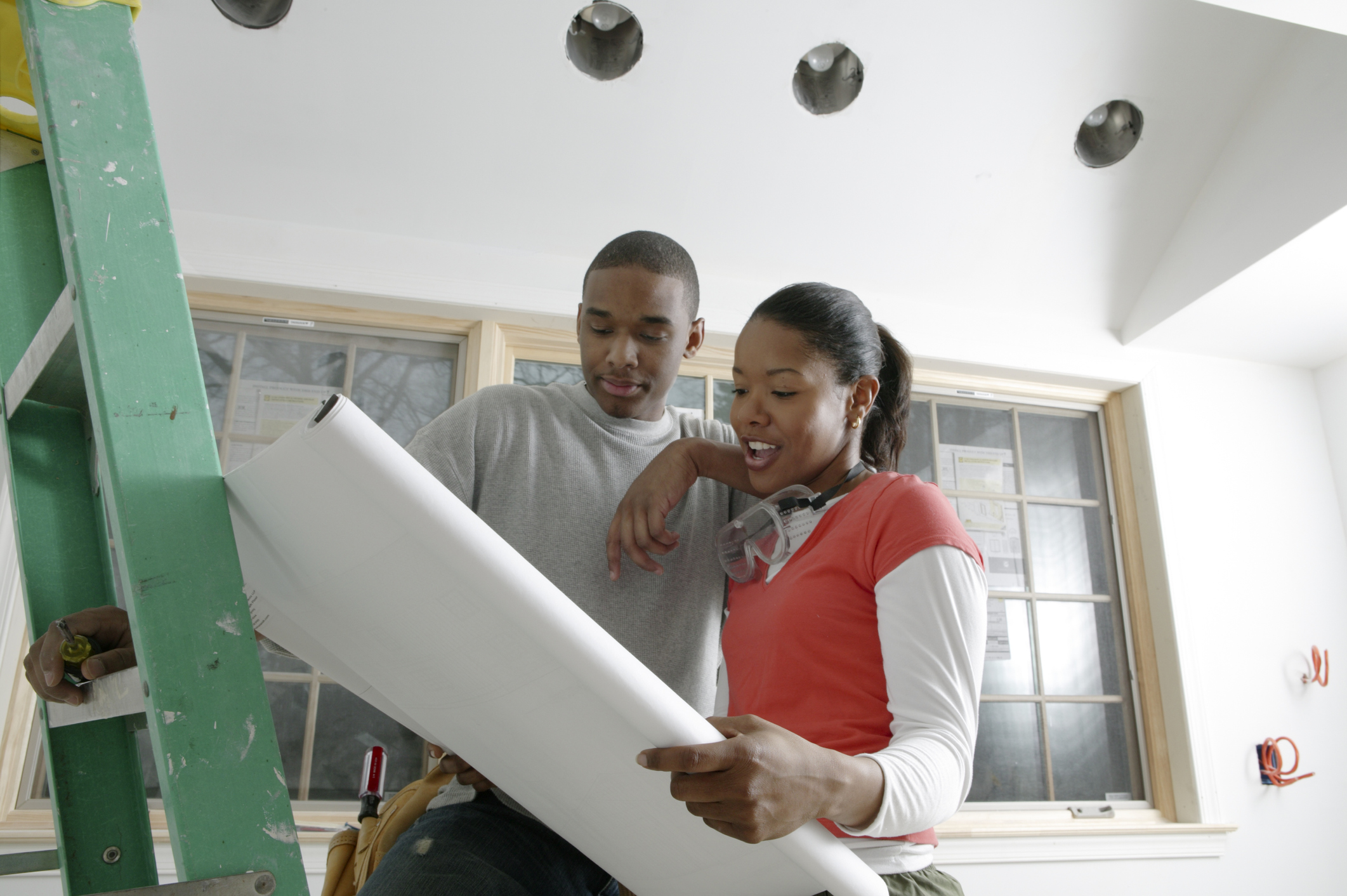How to plan a home addition: Budgeting, hiring a contractor, planning the design, and more
A step-by-step guide to adding square footage and staying sane


Your family is busting at the seams. You need more space and you need it now. And, since you love your neighborhood, adding a room addition sounds like the best solution.
According to the home services company HomeAdvisor, the average home addition costs $40,915 with a range from $14,000 to $150,000. That’s a big chunk of change. When spending that much money, you want to start with a plan.
This step-by-step guide to adding square footage to your home will walk you through the home addition process, remind you of things many homeowners overlook, and keep you sane in the process.
- Considering a renovation instead? Check out our hub page
Check your zoning setbacks
When adding onto your home you have two directions, up and out. Before building out, you need to know how close you may legally get to the property line and where underground utility lines run. You can get this information from your local zoning department. Also, get a copy of your survey. Having this information makes the following steps much easier.
List your why’s
Let’s face it, something’s just not working right with your home. You've tried all the creative small living room ideas, and you've got closet organization down to a science, but there's still something missing. Now’s the time to figure out exactly what that is. Many homeowners think it’s a lack of space when it could be a lack of storage. Before spending $40,000 on a home addition, find out if that addition will solve the problem. What might those problems be?
- Toys are everywhere
- Can’t see the kids playing from the kitchen
- You need an extra bedroom to separate the tweens
- You need a home office
- The washing machine noise drowns out the TV
List your non-negotiables
Everyone has a wish list. But there are some things you just can’t live without. If mom is coming to live with you, her own private bath or basement apartment could be a non-negotiable. To help in the design process, make a list of your “must-haves” and your “would-be-nice-to-haves.” For instance, you want hard floors—a must-have. And while natural hardwood would be lovely, you could live with laminate flooring.
Set a budget
If you have no idea what the project could cost, do a little research before contacting a builder. Not paying cash? Have your financing lined up beforehand, too. Believe it or not, builders are not standing in line waiting for your business. They are busy and need to know what you anticipate spending before presenting ideas you can’t afford. The budget truly is the first step in designing your space.
Get small space home decor ideas, celeb inspiration, DIY tips and more, straight to your inbox!
- Thinking about making more room in your basement? Check out our guide to basement remodeling costs.
Build your team
Homeowners often ask if they should start with an architect or a builder. Since you need to start with a design, they think an architect is a logical choice. But some builders have designers and architects on staff. The correct answer is you want a team. Whether they’re separate businesses who work well together, or professionals working for the same company, you need both.
“The more professionals you get involved early on, the smoother things will go,” says Steve Besch, architect and founder of Besch Design, Ltd. in Chicago. “Most homeowners start with a contractor because they know more about cost.” However, unless you find a designer/builder, starting with a contractor means you’ll then have to find an architect. Besch works with several contractors that he refers his clients to, as do many other architects.
Tips to finding the right professionals for your team include:
- Ask friends who they used.
- Check professional listings like those found on the National Association of the Remodeling Industry's Find a Builder guide
- Read reviews and testimonials.
- Narrow it down to one or two to interview.
Finally, go with your gut. “These guys are going to be in your house for the next 6-12 months,” says Besch. “Don’t just look at the numbers. Check your gut feeling of whether or not you can work the person.”
Design the space
Once you’ve selected a design professional, the fun begins. The designer uses your research and lists and an interview process to brainstorm solution options for your problem.
“I listen to what they say, find out how they live and what their needs are, and then guide them through the process,” says Besch.
A designer helps you to consider options, that often go beyond picking out fixtures for a bathroom design or choosing paint colors. You might not need a home addition; moving a few walls may solve the problem. The designer’s process considers all the information to help choose the right solution.
What’s that process look like? After catching a homeowner’s vision, Besch:
- Walks through the home, inside and out, to see the impact various changes will make to the structure and the traffic flow of the home.
- Measures everything.
- Designs a couple of options for the homeowner to choose from.
- Gets a final budget approval.
- Draws the final blueprints.
- If asked, Besch handles the bidding process for finding a building contractor, as well. “I create a spreadsheet and break down all the line items so the homeowner can compare all the variables,” he says.
Handle the logistics
Now you’re down to the nitty-gritty of living in a construction zone. Or, maybe not. You may consider moving out for the duration. Either way, you may need to do the following.
Start packing—Pack and store the items in the room adjacent to the construction zone. Vibrations from power tools, hammering, and other actions could knock pictures off adjacent walls, cause precious things to walk off of shelves, and dust to infiltrate every nook and cranny.
Put it on your schedule—And your partner’s and kids’ schedules. It wouldn’t be a bad idea to let the neighbors know, too.
Arrange child and pet care—The last thing construction workers need is your dog or toddler underfoot. If your family isn’t already elsewhere during business hours, now’s the time to make arrangements.
Create a meal plan—When your life is turned upside down with a construction project, the last thing you need on your plate every evening is figuring out what (and how) everyone is going to eat. Creating a meal plan that includes a little take-out, some frozen casseroles, and a lot of grilling outside, will take a boatload of stress off your shoulders.
Other good things to know
In the design phase, consider the exterior. A home addition should look like it was original to the house, not an afterthought. This may entail trying to match siding that’s no longer available.
Discussing a few details with your builder up front will relieve a lot of stress caused by unrealistic expectations. Suggested topics include:
Start and stop times for the work crew. An unexpected knock at the door at 6 a.m. is not the way you want to start your day.
What the mess will look like, inside and out. Ask what they do to protect your home from dust and traffic. Outside, ask if your yard is safe for children to play in and how tidy the crew will leave the work site each evening.
Facilities for the crew. Are you expected to give laborers with muddy boots access to your bathroom?
Learn from a friend. If a friend recently added onto their home, ask what went well and what didn’t, what they would do differently, and if they have any tips for you.
Be prepared for hidden costs. They could include:
- Permitting costs
- Septic upgrades to accommodate additional bedrooms
- Repairing hidden damage
- An increase in property taxes after you add square footage
Carol J. Alexander writes website copy, blog posts, and feature articles on home remodeling and construction topics from her home in the Shenandoah Valley of Virginia. In addition to Real Homes, notable clients include, This Old House, Family Handyman, and Florida Roofing magazine.
